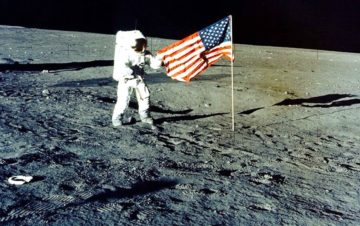The Editorial Board in The Christian Science Monitor:
 Those venturing into space in 2022 have the moon in their eyes. Not that ferrying all sorts of people into orbit and suborbit will be abandoned. 2021 saw not only astronauts and scientists but also several tourists sent skyward for unmatched views of the big, blue marble that is Earth. They were young and old, women and men, various nationalities – even William Shatner, never a real spaceship captain but who played one on TV.
Those venturing into space in 2022 have the moon in their eyes. Not that ferrying all sorts of people into orbit and suborbit will be abandoned. 2021 saw not only astronauts and scientists but also several tourists sent skyward for unmatched views of the big, blue marble that is Earth. They were young and old, women and men, various nationalities – even William Shatner, never a real spaceship captain but who played one on TV.
Why the moon? Haven’t humans been there already? The truth is it’s an important steppingstone.
“Because the goal is Mars,” Bill Nelson, former U.S. senator and NASA’s new administrator, told The Guardian. “What we can do on the moon is learn how to exist and survive in that hostile environment and only be three or four days away from Earth before we venture out and are months and months from Earth.”
In 2022 Russia, India, Japan, and South Korea will join the United States in sending uncrewed missions to the lunar surface or into orbit around it. The Japanese lander will contain a rover built in the United Arab Emirates. China has big ambitions in space too, but right now they’re centered closer to Earth. An orbiting Chinese space station, Tiangong, may be finished and become fully operational this year, according to a U.S. intelligence report. With so much new activity planned in orbital space, by both governments and private enterprise, a need grows to update the 1967 Outer Space Treaty to maintain cooperation. A United Nations resolution passed last November calls for a working group to research new agreements. It will meet twice in 2022.
More here.
